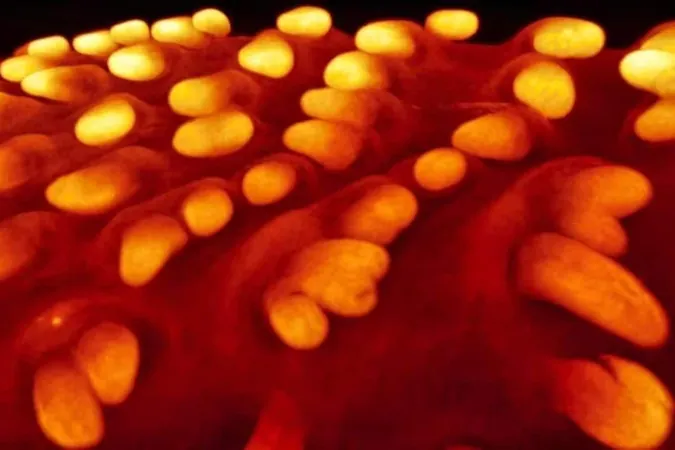
Are We One Step Closer to Creating Dinosaurs? Chicken Embryos Develop Dinosaur-Like Feathers!
2025-03-24
Author: Ming
Feathers have long been associated with the beauty and grace of modern birds, but their intriguing story stretches back over 200 million years to a time when their ancestors roamed the Earth. A groundbreaking study from the University of Geneva is pushing the limits of our understanding of evolution, revealing that chicken embryos can grow primitive, dinosaur-like feathers by simply flipping a genetic switch!
The Genetic Blueprint: Sonic Hedgehog Gene at the Helm
The team of researchers embarked on a daring journey into the past by manipulating the Sonic Hedgehog (Shh) gene, a vital molecular pathway in feather development. By inhibiting this gene in developing chicken embryos, they triggered the formation of simple, tubular feather structures akin to the proto-feathers found in non-avian dinosaurs.
These archaic feathers didn't boast the intricacy of today's plumage; rather, they were likely used by early theropods for insulation or display rather than flight. This remarkable genetic manipulation is a monumental breakthrough in experimental evolutionary biology, breathing life into a journey through time.
The Feather Resurrection: Recovery Amidst Chaos
Interestingly, after approximately 14 days of incubation, the embryos began to show signs of recovery. Despite the initial abnormal development, dormant feather follicles reactivated, leading many chicks to grow normal feathers, albeit with some retaining small bald patches. This resilience underscores the inherent strength embedded in modern avian genetics. “It is much harder to permanently disrupt feather development itself," explained Rory Cooper, the study's co-author.
From Scale to Feather: A Tale of Evolution
Previous research revealed that stimulating the Shh gene could transform reptilian scales into feather-like structures. Now, silencing this very gene has been shown to promote a return to the ancient, filamentous forms reminiscent of dinosaur ancestors. This two-way switch showcases the gene's pivotal role in feather evolution, providing critical insights into the mechanisms behind evolutionary change while hinting that ancient traits can be reawakened under the right conditions.
Unlocking Nature's Playbook
Published in PLOS Biology, this research not only gives us a glimpse into prehistoric anatomy but raises intriguing questions about the evolution of gene networks over time. The study reveals the genetic robustness shaped by natural selection, suggesting a complex interplay between ancient and modern traits. "Over the course of evolution, the network of interacting genes has become extremely robust," stated lead researcher Michel Milinkovitch.
The Future of Genetic Engineering of Avian Traits
The implications of these findings extend beyond evolutionary biology. As scientists delve deeper into understanding these genetic controls, they may unlock dormant evolutionary blueprints contained in modern genomes. This knowledge could pave the way for reviving ancient biological traits or even inspire innovative approaches in biomedical and regenerative medicine.
This exciting intersection of genetics and evolution invites us to ponder: Are we on the brink of a modern-day Jurassic Park? By reawakening ancient traits, the future of avian and other species’ evolution may be more vibrant and fascinating than ever!


 Brasil (PT)
Brasil (PT)
 Canada (EN)
Canada (EN)
 Chile (ES)
Chile (ES)
 Česko (CS)
Česko (CS)
 대한민국 (KO)
대한민국 (KO)
 España (ES)
España (ES)
 France (FR)
France (FR)
 Hong Kong (EN)
Hong Kong (EN)
 Italia (IT)
Italia (IT)
 日本 (JA)
日本 (JA)
 Magyarország (HU)
Magyarország (HU)
 Norge (NO)
Norge (NO)
 Polska (PL)
Polska (PL)
 Schweiz (DE)
Schweiz (DE)
 Singapore (EN)
Singapore (EN)
 Sverige (SV)
Sverige (SV)
 Suomi (FI)
Suomi (FI)
 Türkiye (TR)
Türkiye (TR)
 الإمارات العربية المتحدة (AR)
الإمارات العربية المتحدة (AR)